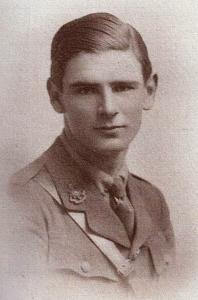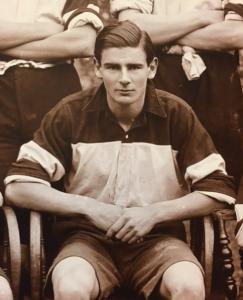
|

|
| 2nd Lieutenant John Arthur FLOWERS | |
|
A Company, 9th (Service) Battalion Royal Sussex Regiment Date of birth: 23rd February 1896 Date of death: 31st August 1916 Killed in action aged 20 Commemorated on the Arras Memorial Bay 6 |

|
| John "Jack" Arthur Flowers was born at Steyning in Sussex on the 23rd of February 1896 the eldest son of Arthur Flowers, a solicitor and clerk to the guardians of the Steyning Union, and Florence Ellen (nee Stockman) Flowers of 18 Hove Park Villas, Hove in Sussex. He was christened at Steyning on the 19th of April 1896. He was educated at Lancing College where he was in Olds House from January 1911 to December 1914. He was a member of the Officer Training Corps from January 1911 to December 1914, where he rose to the rank of Sergeant and Acting Platoon Commander. He was a House Captain from September 1913 and was appointed as Head of House in September 1914. He won his House Colours for Gym. He was a member of the 2nd XI Cricket in 1912 and the 1st Cricket XI in 1913 and 1914, scoring 275 runs in the latter season at an average of 21.15 including a score of 124 against the Sussex Martlets in his most memorable innings. He played for the Football 2nd XI in 1912/13 and for the 1st Football XI in 1913/14 winning his sports colours in 1914. He was appointed as a Prefect in September 1914. He successfully passed the preliminary examinations for the law which he intended to pursue as a career, but instead, he applied for a commission in the 9th battalion Royal Sussex Regiment on the 30th of November 1914 in an application which was supported by the Reverend Bowlby, Head Master of Lancing. He underwent a medical examination on the 24th of December 1914 at which he was passed fit for general service. He went to the front in December 1915 and joined his battalion in the field at Houlle on the 13th of the month. He was wounded at Ypres on the 21st of January 1916 and was invalided home on the 6th of February 1916 from Boulogne on board the SS "St David, landing at Dover the same day. On the 21st of February 1916 a Medical Board was convened at Caxton Hall which reported the following:- "He was wounded by a bomb (one of our own) explosion on the front of the right forearm slightly towards the underside and just above the middle. A fragment of the bomb lodged and X-rays show it to be fairly superficial. On February 10 1916 the arm was incised but the foreign body was not found. He is going on satisfactorily, no injury to nerve or bone." On the 20th of April 1916 a Medical Board was convened at 2nd East General Hospital at which he was declared fit for general service. On his recovery he was posted to the 10th (2nd Reserve) Battalion of his regiment on the 21st of April 1916 and left for the front again on the 7th of June 1916. On the 30th of August 1916, during the Battle of the Somme, the 9th Battalion Royal Sussex Regiment moved into trenches to the left of Delville Wood. A and D Companies were in the front line. At 2pm on the 31st of August, after a heavy bombardment, the Germans launched an attack against the British lines which broke through the front line on the left of the Royal Sussex. Two platoons from C Company were sent forward to reinforce the front line while two more platoons from the Company opposed enemy bombers who were working their way towards the left rear of the battalion. They held the enemy off until they themselves were reinforced by a company of the 2nd Battalion Leinster Regiment at about 5pm. During the afternoon John Flowers was shot and killed by a sniper. His Company Commander, Captain M. Campbell-Johnstone, wrote:- "Poor old Jack was looking over the parapet in order to get snipers and unfortunately one hit him in the head. We were in those trenches three days and three nights with practically no water or food and were very nearly surrounded by the Germans. It will, no doubt, be a great satisfaction to his friends to know that he died on the field of battle, fighting a plucky fight for his dear country-in fact, his end was that of a fine gallant English officer, regretted by his comrades. He was buried on the field of battle where he died." He is commemorated on the memorial at Hove Library in Sussex. The Commonwealth War Graves Commission records his death as having occurred on the 1st of September 1916 but battalion records show that he was killed on the 31st of August 1916. |
|
 | |
| Olds House |
Back